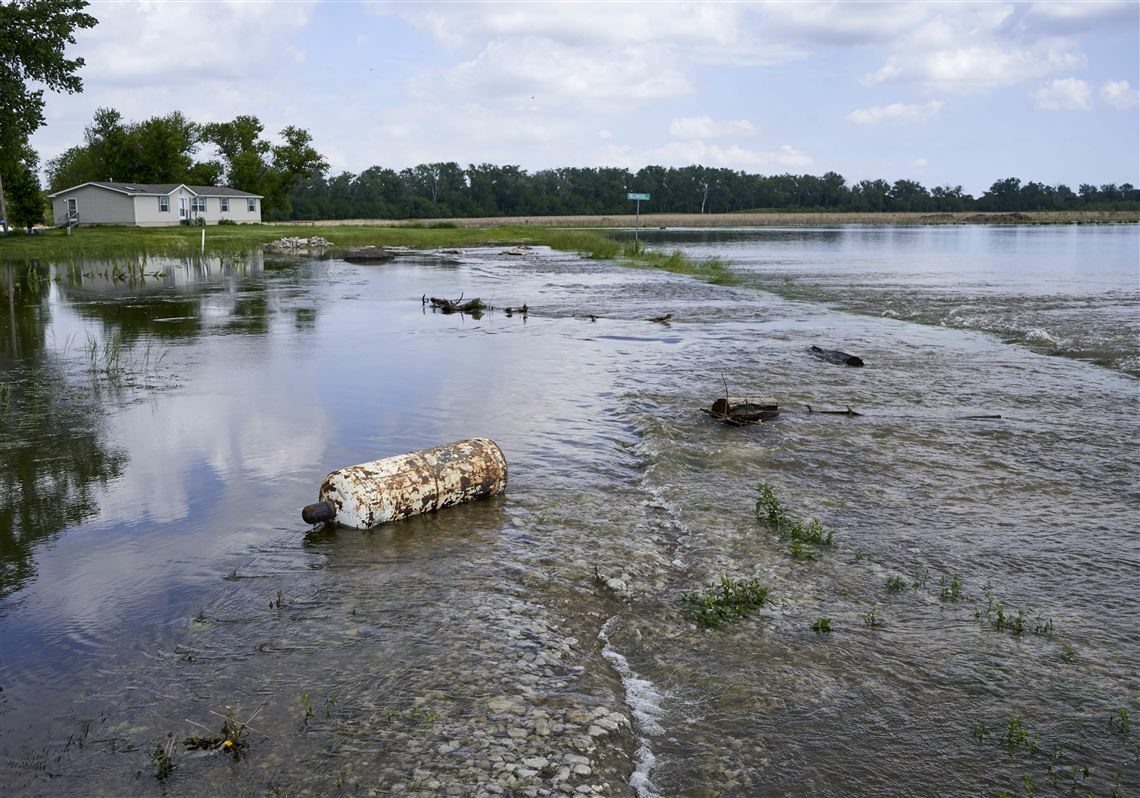
© AP
May 2019 was the United States' second-wettest month of all time after numerous heavy rain events soaked the nation, according to a just-released government report. The first five months of the year ranked as the wettest such period on record.
The national climate report from
NOAA's National Centers for Environmental Information (NCEI) said the country's average May precipitation total was 4.41 inches, 1.50 inches above the 20th-century average (1901-2000) and only 0.03 inches shy of the nation's all-time wettest month of May 2015 (4.44 inches) in records dating to January 1895.
Record or near-record precipitation was observed in May from the West Coast to the central Plains, Great Lakes and parts of the northern mid-Atlantic region.
Kansas, Nebraska and Missouri all experienced their wettest May on record, NOAA said. Seven additional states - Arizona, Illinois, Iowa, Nevada, Oklahoma, South Dakota and Utah - ranked among their five wettest Mays.
Flooding has been ongoing in portions of the central U.S. since January and was further exacerbated in May by frequent bouts of excessive rainfall. Severe river flooding occurred along the Arkansas, Missouri and Mississippi rivers in May.
The Southeast was the only region that observed below-average precipitation in May. This included Georgia, North and South Carolina and Tennessee. In fact, North Carolina recorded its 14th-driest May on record.
A
historic May snowstorm struck Duluth, Minnesota, where 10.6 inches of snowfall was measured May 9. The city's previous May snowstorm record was 5.7 inches from May 2-5, 1954. In addition, Denver reported its snowiest May in the last 44 years, with 3.9 inches piling up during the month.
Also of note, over 500 tornado reports were tallied by local National Weather Service offices in May, more than double the three-year average of 226. It was the most active 30-day period for tornadoes since 2011.
The Atlantic hurricane season also started early
for the fifth-consecutive year, when Subtropical Storm Andrea made its brief appearance to the southwest of Bermuda May 20-21.
Temperatures in May were 0.7 degrees below the 20th-century average for the U.S. as a whole, ranking in the bottom one-third of NOAA's period of record.
January-May 2019Far-above-average precipitation has dominated a large portion of the country so far this year.
The five-month period from January through May 2019 was the wettest January-May period in the 125-year record, NOAA said.
The U.S.'s year-to-date average precipitation total in the first five months of the year was 15.71 inches, 3.32 inches above average. The previous record was 15.13 inches from January-May 1983.
Illinois, Kansas, Nevada and South Dakota all recorded their wettest year-to-date period through May. Nine additional states - Arkansas, Indiana, Iowa, Michigan, Oklahoma, Pennsylvania, Tennessee, Utah and Wisconsin - had one of their five wettest January-May periods.
Georgia, South Carolina and Washington were the only three states to record below-average precipitation in the first five months of 2019.
The 12-month period from June 2018 through May 2019 shattered the previous precipitation record for any 12-month period, with an average of 37.68 inches measured across the U.S. The previous all-time record for a year-long period was just recently set: 36.20 inches from May 2018 through April 2019.
Temperatures varied greatly by region from January through May, but when averaged out over the entire nation, they wound up 0.1 degrees above the 20th-century average and ranked in the middle one-third of the January-May record.
Comment: The record wet weather in the United States continues as parts of the Gulf Coast were inundated with a month's worth of rain in just 24 hours.
See also: The wettest and wildest planting season American farmers can remember